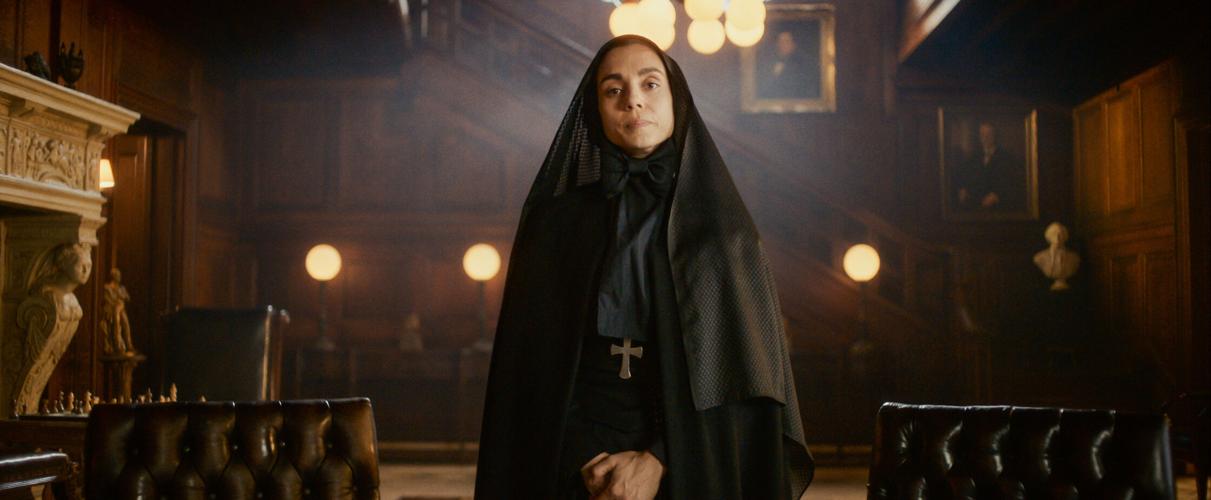It took a while — 107 years after her death and 78 years since she was canonized as the Catholic Church’s first U.S. saint — but Frances Xavier Cabrini is finally getting her closeup.
Earlier this month, the feature-length biopic “Cabrini” was released into U.S. theaters, earning praise for the lead performance of Cristiana Dell’Anna as Mother Cabrini, to go with more than $16 million in ticket sales to date.
And while some might argue it took long enough, there’s another argument to be made that the story of Mother Cabrini’s life — which she dedicated to caring for the orphaned, the poor, the overlooked and forsaken — might be arriving at precisely the right time.
Actor John Lithgow, who plays the villainous (and fictional) New York Mayor Gould in director Alejandro Monteverde’s film, is inclined toward the latter.
“Right now I’m just seeing such grievance, such fear, such bad news, such bad politics, such divisiveness. You read this (script) and you think, ‘Oh, god, what a relief,’” Lithgow said in a studio-provided interview. “Here’s a good story. Here’s a story about people whose behavior you deeply admire and aspire to, and that’s really rare. It seems almost corny to say how much I craved that, but at his point in our recent history in particular, I think it’s a wonderful movie to make.”
While Mother Cabrini’s work in New Orleans has made her name a household one among the city’s Catholics, Monteverde’s film focuses largely on her early life as a frail and sickly child in Italy; her later determination to establish a religious order, the Missionary Sisters of the Sacred Heart; followed by her eventual move to America and her work ministering to New York’s persecuted Italian immigrant community.
National impact
So where does New Orleans fit in?
As far as Monteverde’s film is concerned, it mostly doesn’t.
“Cabrini” includes an opera singer character named Disalvo who, according to screenwriter Rod Barr, is a composite character inspired by people Mother Cabrini met during her time in New Orleans, where she used Italian opera “to open the hearts of Americans to the Italians in their midst.”
Other than that, her work in New Orleans gets relatively short shrift.
That’s almost by necessity, given the outsized impact Mother Cabrini had in her life, having founded 67 missionary institutions not just in New York and New Orleans but also in Chicago, Denver, Los Angeles, Philadelphia and Seattle, as well as throughout Europe and Latin America.
Even without delving into her time in New Orleans, Monteverde’s film runs a hefty 2 hours 22 minutes.
But her local legacy is worth revisiting.

Cristiana Dell’Anna portrays Frances Xavier Cabrini, who opened orphanages during the deadly yellow fever epidemic in New Orleans.
On the archbishop's orders
As recounted in Theodore Maynard’s book “Too Small a World: The Life of Francesca Cabrini,” on which Monteverde’s “Cabrini” is partly based, Mother Cabrini left Europe in 1889 at the urging of Pope Leo XIII and headed with a group of fellow nuns for New York.
Arriving on a gloomy day in March 1889 aboard the vessel Bourgogne, she set about the work that would define her life. That work — and her struggles to achieve it, many of them due to the fact that she was a woman — make up the heart of Monteverde’s film.
But in 1892, she left New York to visit New Orleans at the request of Archbishop Francis Janssens.
It was a difficult time for the city’s then-new Italian population, just a year removed from the infamous New Orleans lynchings, in which 11 people of Italian descent were killed by a mob for their alleged role in the assassination of Police Chief David Hennessy. That event, which spawned an international incident, is still recognized as the largest single mass lynching in American history.
It is also emblematic of the depth of the prejudice and persecution then experienced by the city’s Italians.
Amid the yellow fever pandemic
It was against that backdrop that Mother Cabrini established an orphanage at 817 St. Phillip St. in the French Quarter, then a hub of Italian immigration. The 1850s side-hall structure still stands there today.
Upon outgrowing that space, she built a new orphanage at 3400 Esplanade Ave. Completed in 1906, it would become home to many children orphaned in the 1905 yellow fever epidemic.
As that orphanage was being built, Mother Cabrini lived in the Pitot House, located on land overlooking Bayou St. John. That building, at 1440 Moss St., also still exists and today serves as headquarters for the Louisiana Landmarks Society.
In 1959, the Esplanade Avenue orphanage she founded would become Cabrini High School. Mother Cabrini’s old bedroom and chapel there are still kept as they were when she occupied them. Archbishop Gregory Aymond in 2019 designated them a shrine.
Even more enduring, though, is the spirit and compassion she displayed, both of which still inspire many New Orleans Catholics.
They aren’t alone.
On the movie review aggregator Rotten Tomatoes, Monteverde’s “Cabrini” boasts a 91% approval rating based on 85 critics’ reviews.
For his part, Lithgow gets it.
“It’s got a wonderful, good heart,” he said of the film. “In this day and age, it’s so rare to read a script, let alone see a movie, that’s genuinely good — I mean, good intentions, an unironic celebration of an important person who’s done deeply good works.”
To be clear, Tortorich’s was not New Orleans’ first Italian restaurant. But it was certainly among them, and — like spaghetti flung at a wall …
The journey from Brooklyn to New Orleans is long — just short of 20 hours behind the wheel if you’re making good time, not counting stops for …





